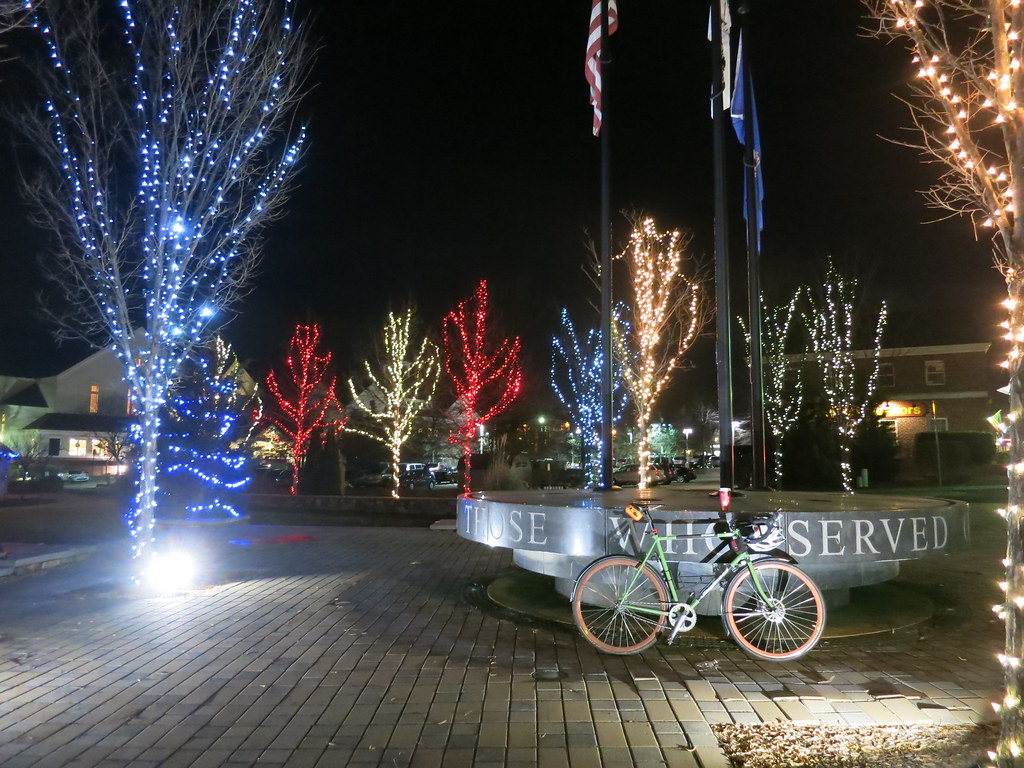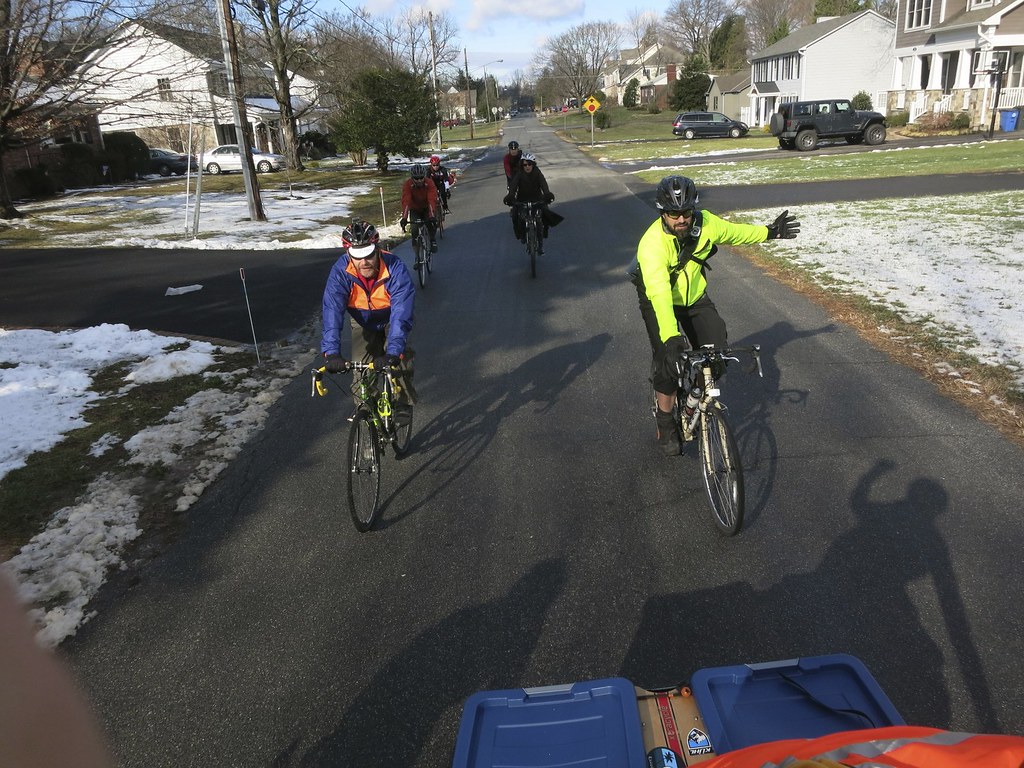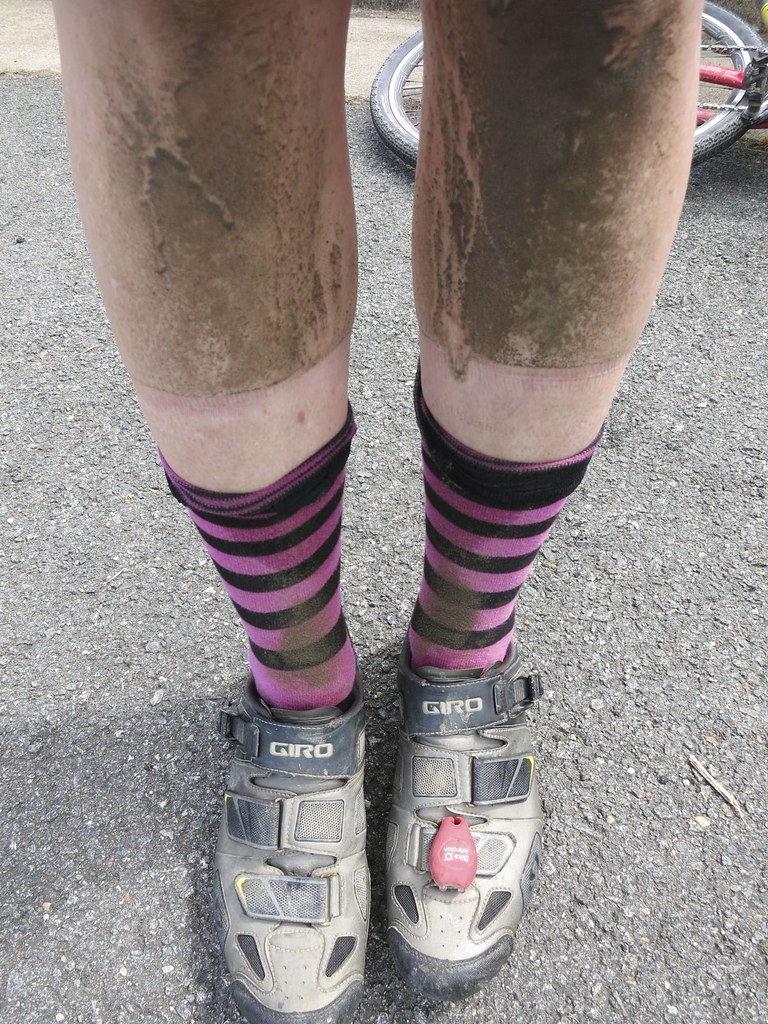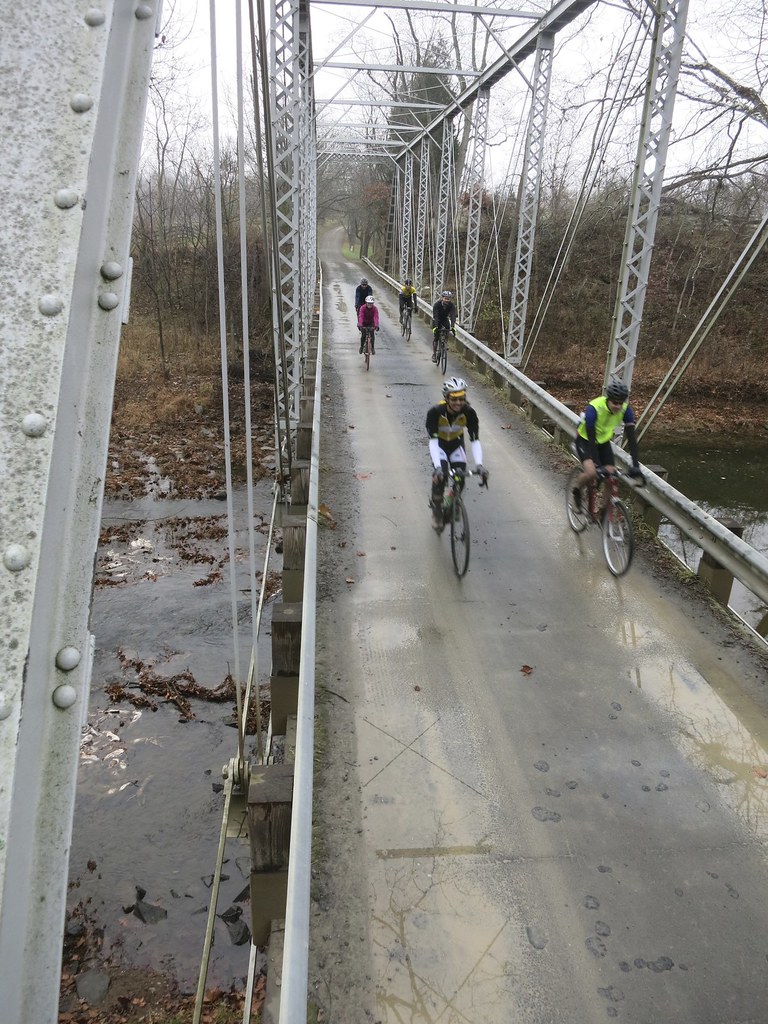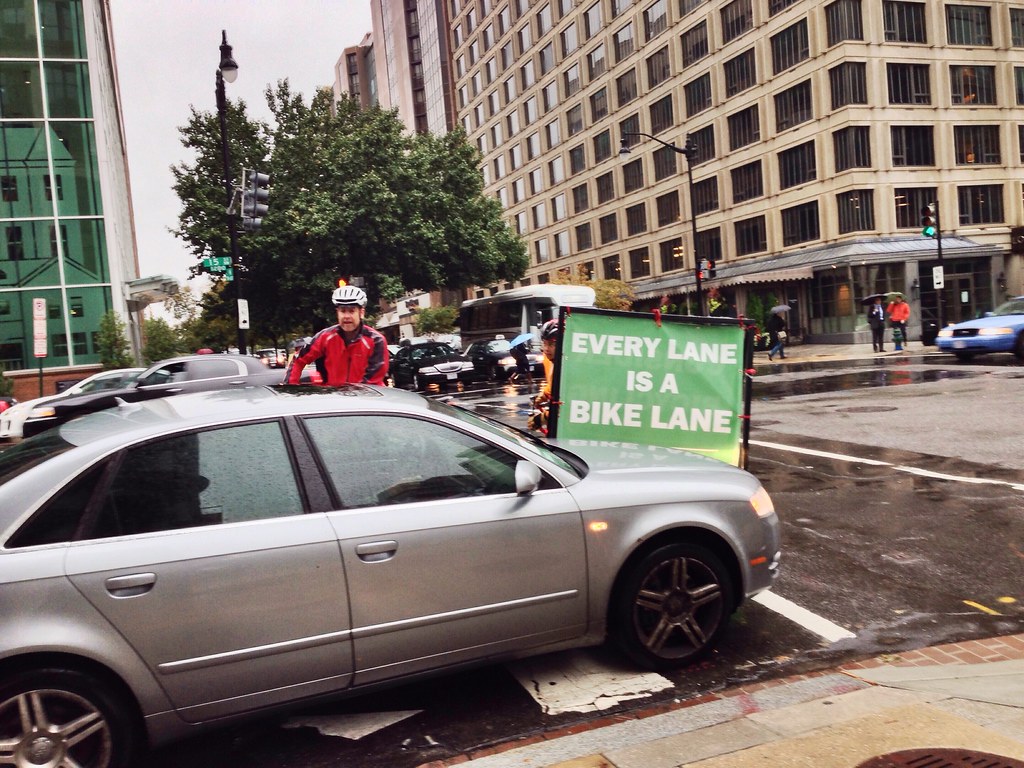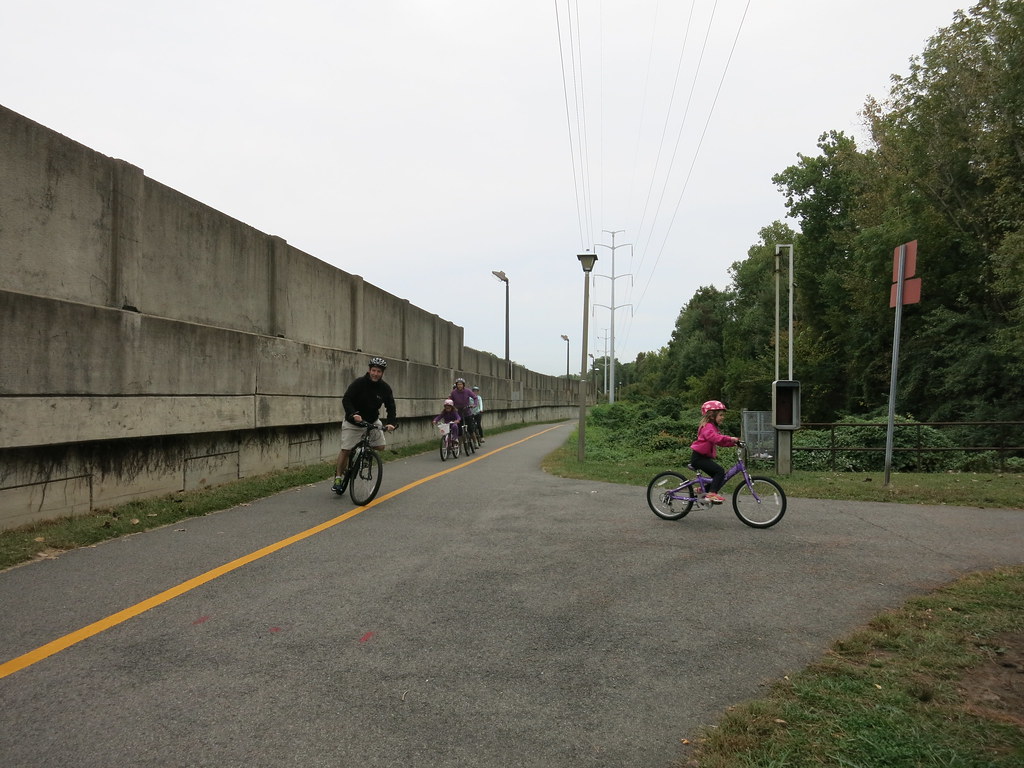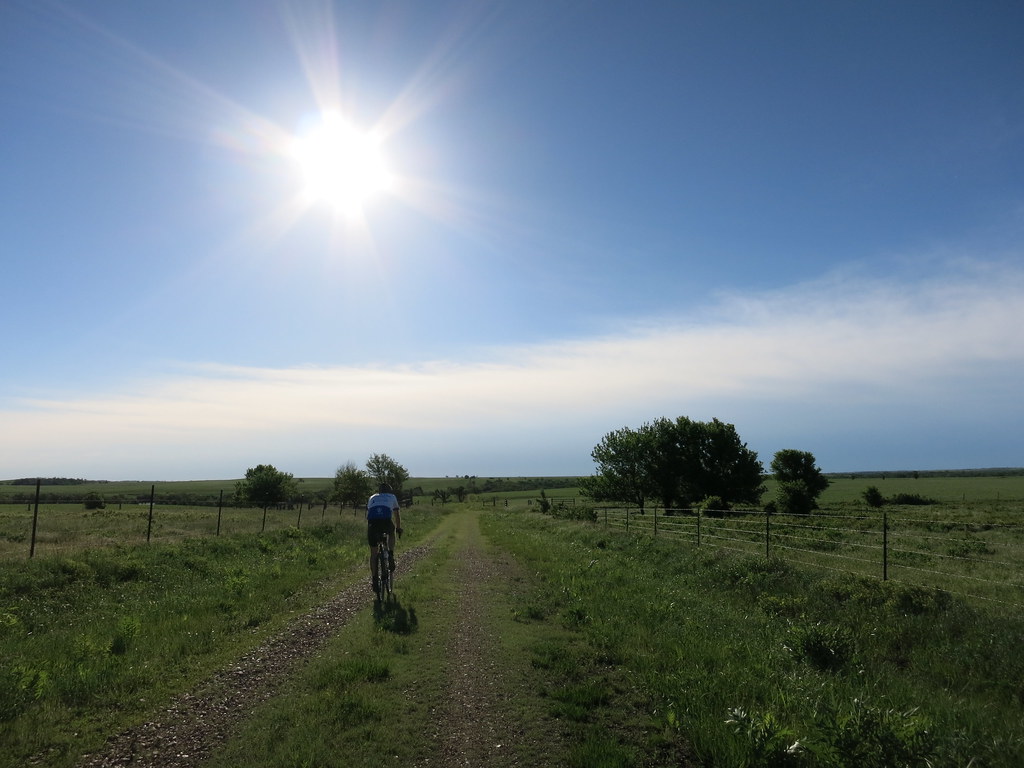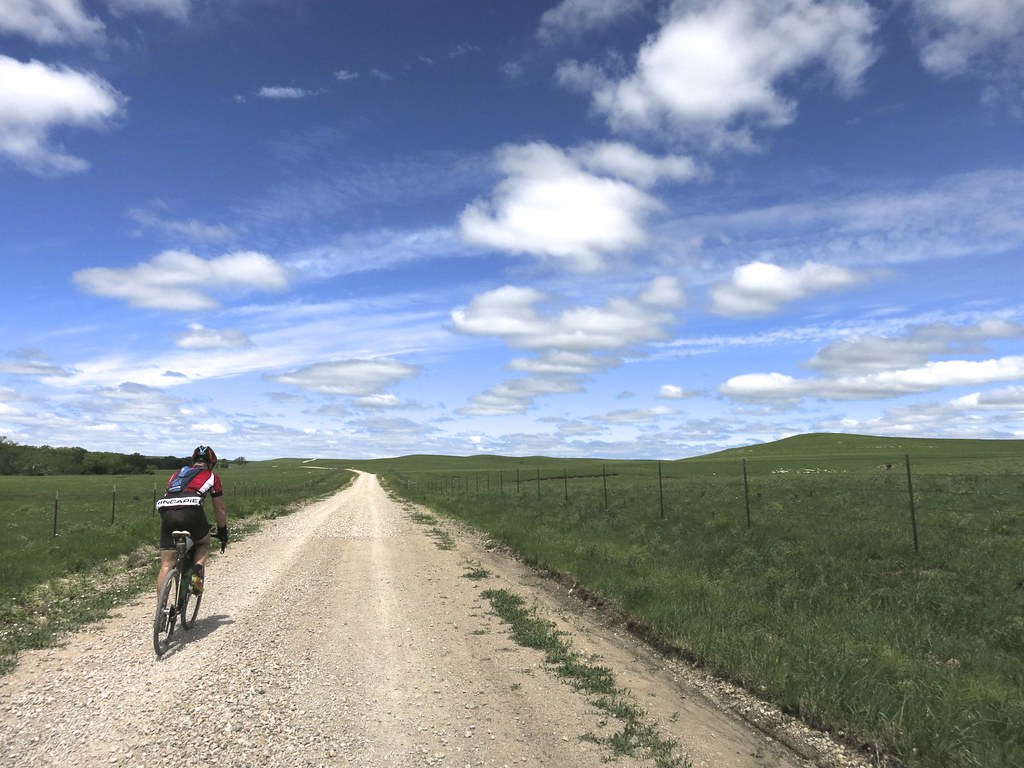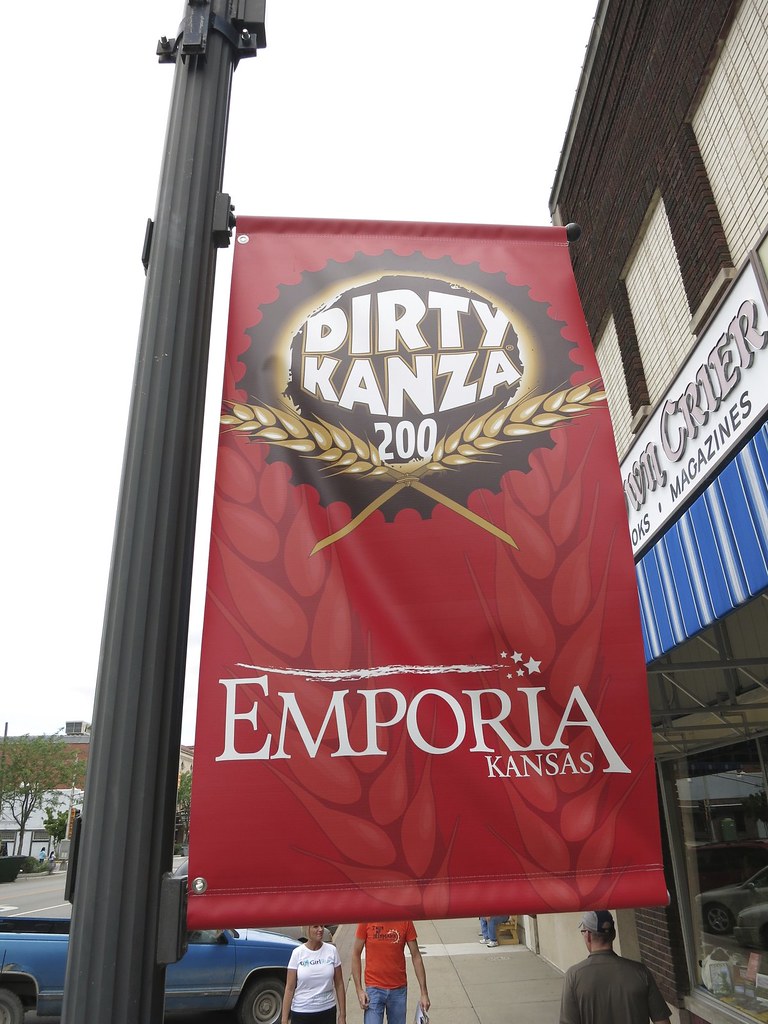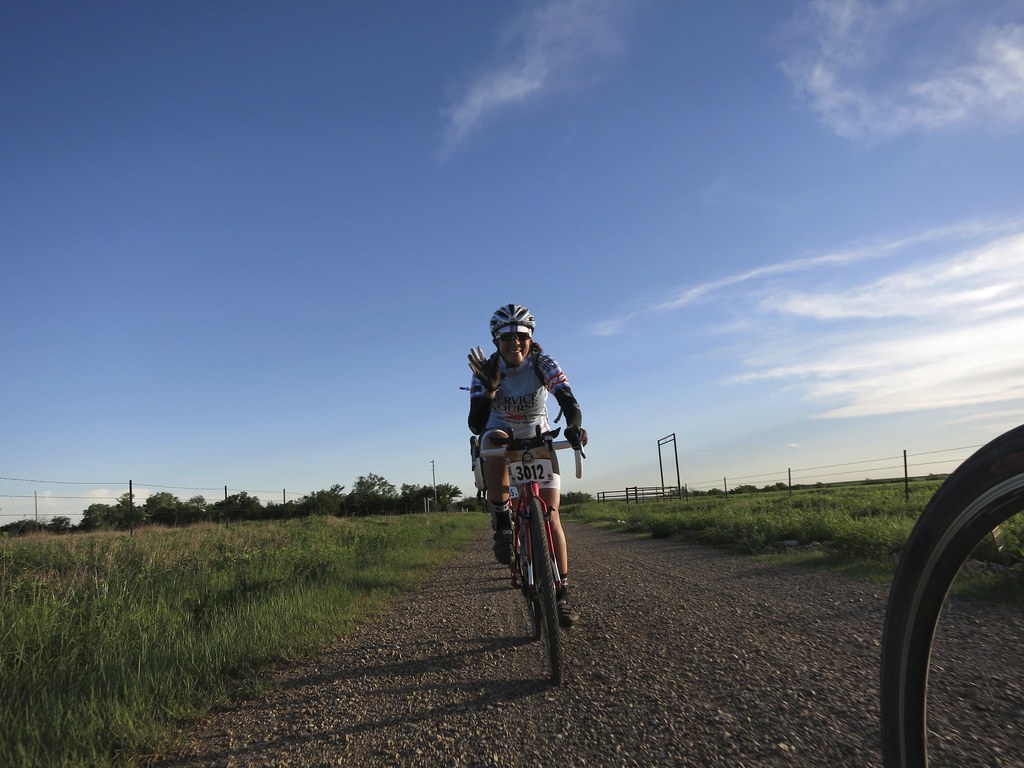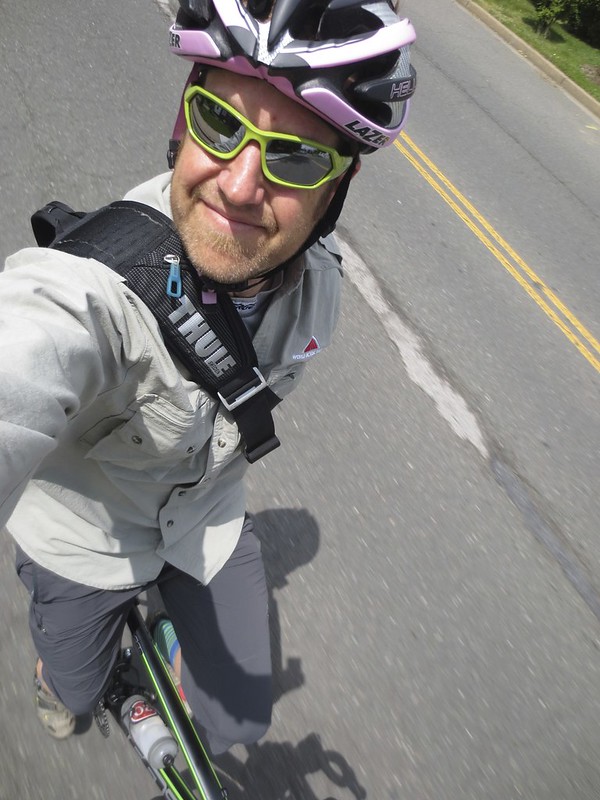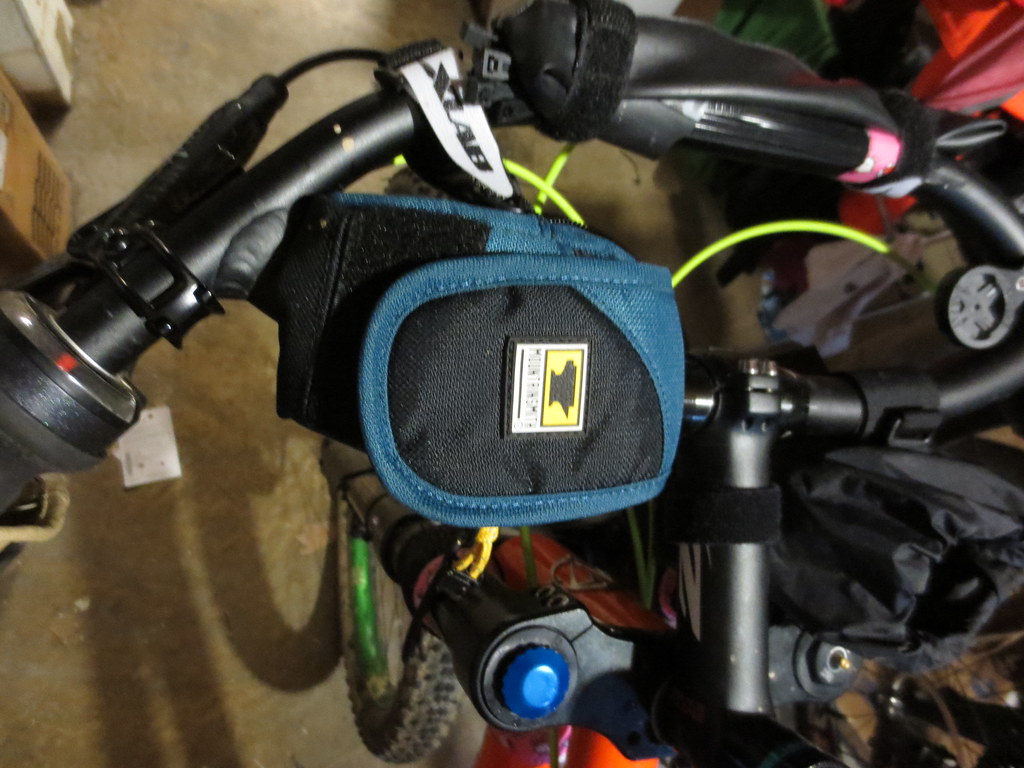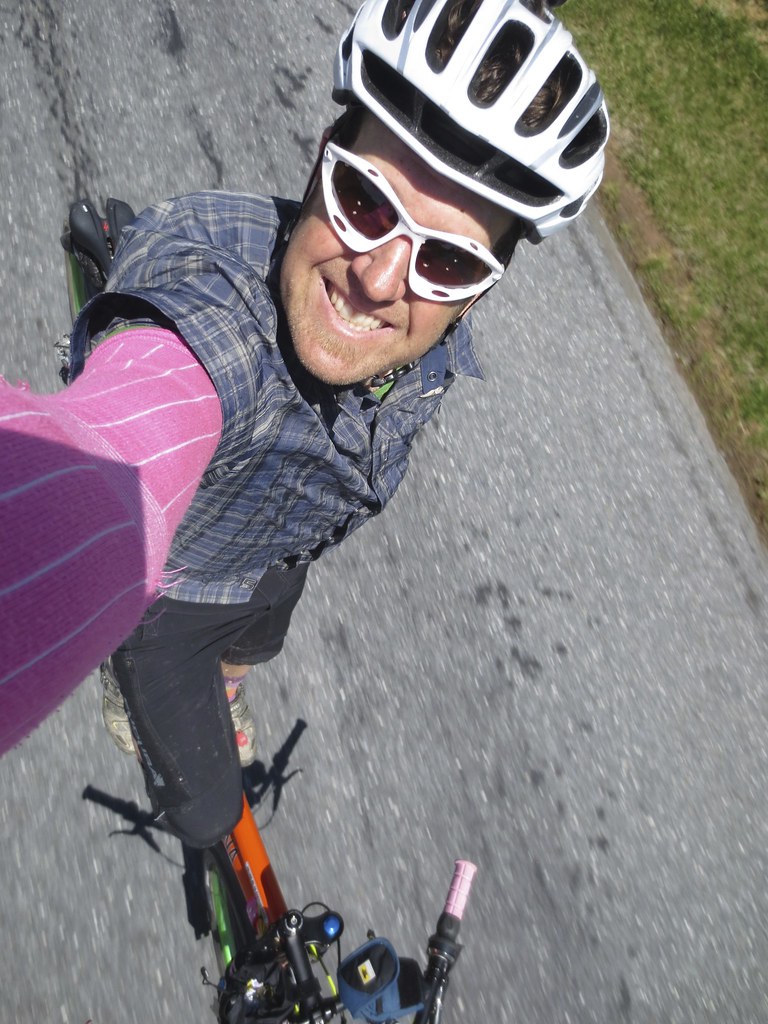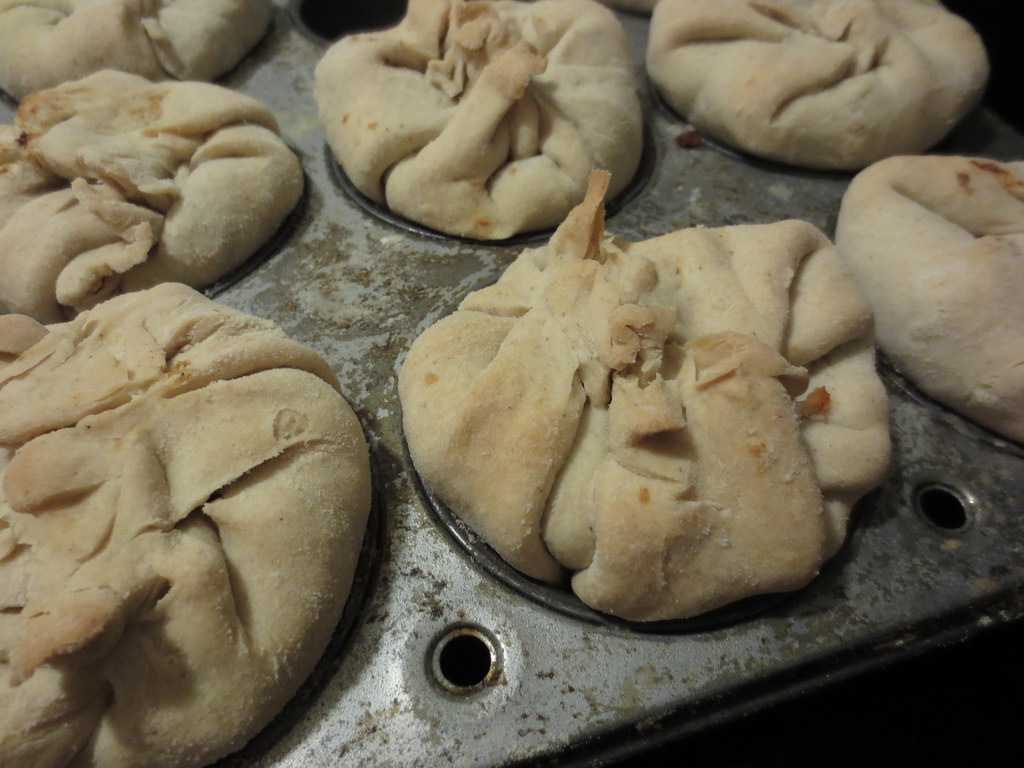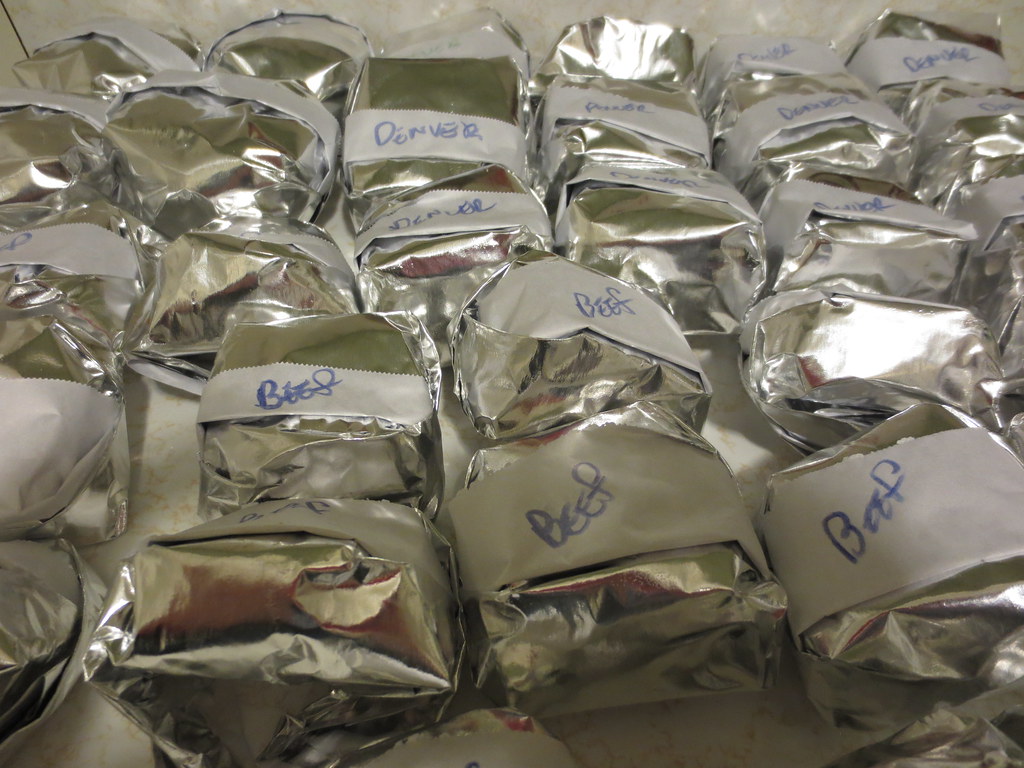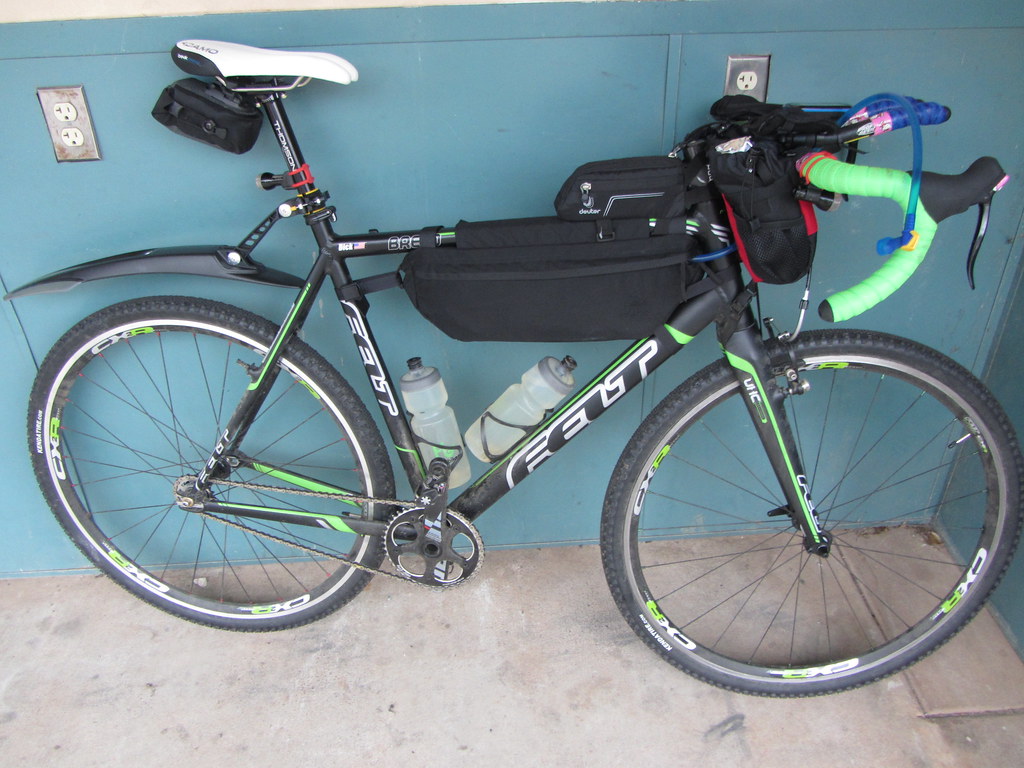Coffee House Manager: "What an awesome idea! Thank you. We've got three people that ride to work!"
Carry-out Pizza Place Manager: "All of our employees are rich. They don't have to ride bikes."
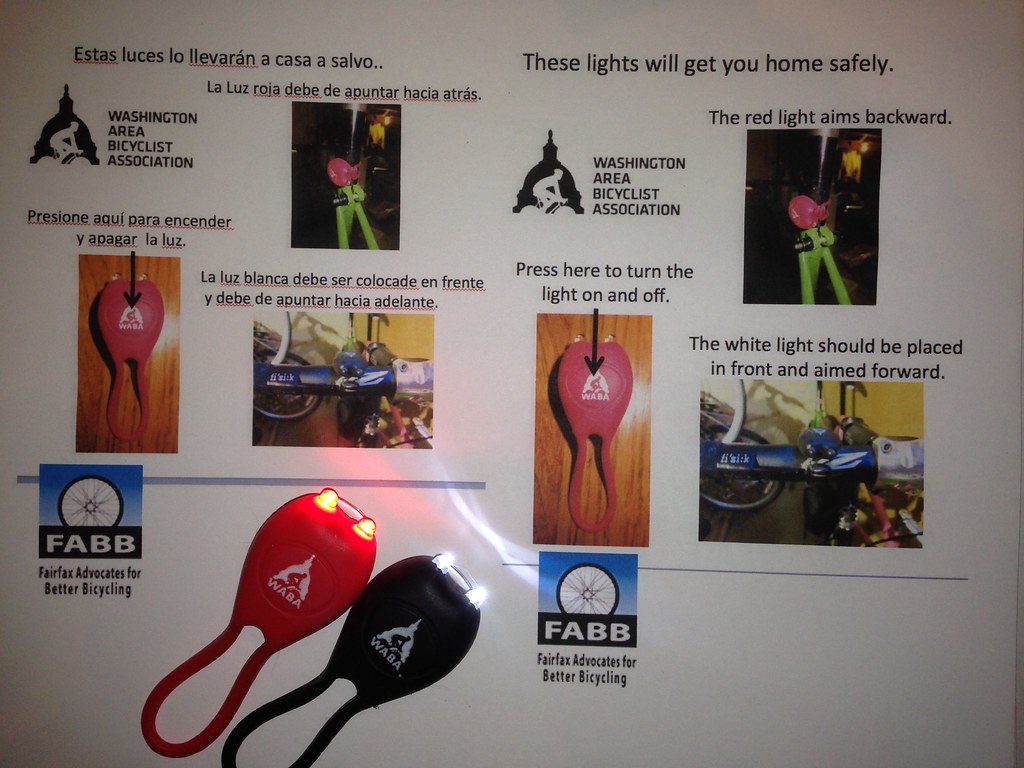 |
| The Lights |
And so on…
Let me back up and explain what was going on. Like the intro says, I work for Washington Area Bicyclist Association. One of our sister groups is Fairfax Advocates for Better Bicycling. I work as the Suburban Outreach Bike Ambassador. If Santa was a cyclist and Christmas was a cycling holiday, I'd be the elf that brings 2-wheeled happiness to all the good (and bad) girls and boys. I don't actually give away bicycles. Rather I bring the joy of CYCLING to people.
One of my favorite activities is helping people ride safely. Visibility is a big part of that. Every year WABA and FABB give away hundreds, if not thousands of sets of flashy lights that make it much easier for people to see. We give them to everyone, but my real goal is to get them on the handlebars and seat posts of the folks who may not be able to afford a good set of lights on their own. Going restaurant to restaurant asking if places have employees that ride is a great way to get lights where they need to be.
Vienna, Virginia
In three hours of walking around the
restaurant district of Vienna, Virginia, I don't think I had the same
response twice to the introduction at the top of this blog post. My
buddy Alex joined me for an hour of walking around town and he had the
same reaction. There were, however, some common threads:
1) The vast majority of people responded positively and really liked what we were doing.
2) No-one understood what we were doing after the first introduction. We had to repeat ourselves at least once every single time we walked into an establishment. No matter how simple or complex I made the pitch, no-one got it the first time the words left my mouth. Almost everyone got it by the second delivery. Two people never did understand the concept of giving away lights to people who ride, even after many attempts to explain.
3) Coffee house managers were overwhelmingly positive about the idea.
4) Pizza carryout places were universally negative to the idea.
1) The vast majority of people responded positively and really liked what we were doing.
2) No-one understood what we were doing after the first introduction. We had to repeat ourselves at least once every single time we walked into an establishment. No matter how simple or complex I made the pitch, no-one got it the first time the words left my mouth. Almost everyone got it by the second delivery. Two people never did understand the concept of giving away lights to people who ride, even after many attempts to explain.
3) Coffee house managers were overwhelmingly positive about the idea.
4) Pizza carryout places were universally negative to the idea.
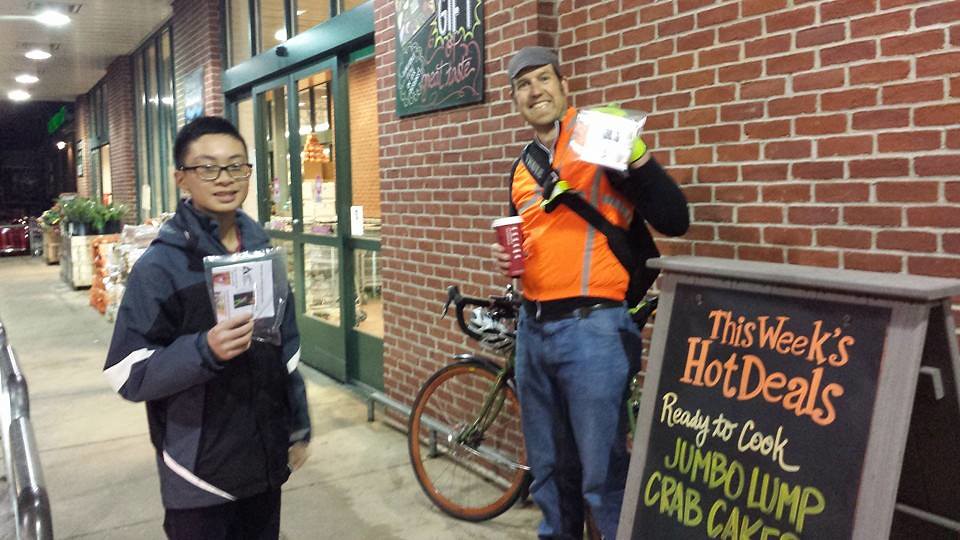 |
| Alex and I: This week's Hot Deals |
The best interaction came when I was walking around before Alex joined me. One coffee house employee tracked me down 5 minutes after I'd left her place of work, handed me a free cup of fancy coffee, shook my hand and thanked me.
The funniest/most negative was an older woman in a completely vacant diner surrounded by restaurants that were packed with customers who told me that she didn't employ "The kind of people who have to ride bikes to work." The contempt in her voice didn't escape me.
One pizza delivery place manager yelled to his crew, "What the *expletive* was that all about?" before we'd even got to the door. Even three attempts, one from Alex, two from me, hadn't been successful at explaining what we were doing.
The bottom line: I spent 3 hours walking around Vienna. Alex was with me helping out for a little over an hour. We gave out just short of 50 sets of bike lights. Every set of those lights got into the hands of someone who really needed and wanted them. Even though I felt like a door-to-door vacuum cleaner salesperson, wee had positive interactions with over 100 people and really only one or two negative reactions to what we were doing. Even the establishments that didn't have people who commute by bike got to see that there are people out there that do and that WABA and FABB are out there trying to make their lives a little better. It was a super positive night!
Be seen! Get home safely. :D
Pete
